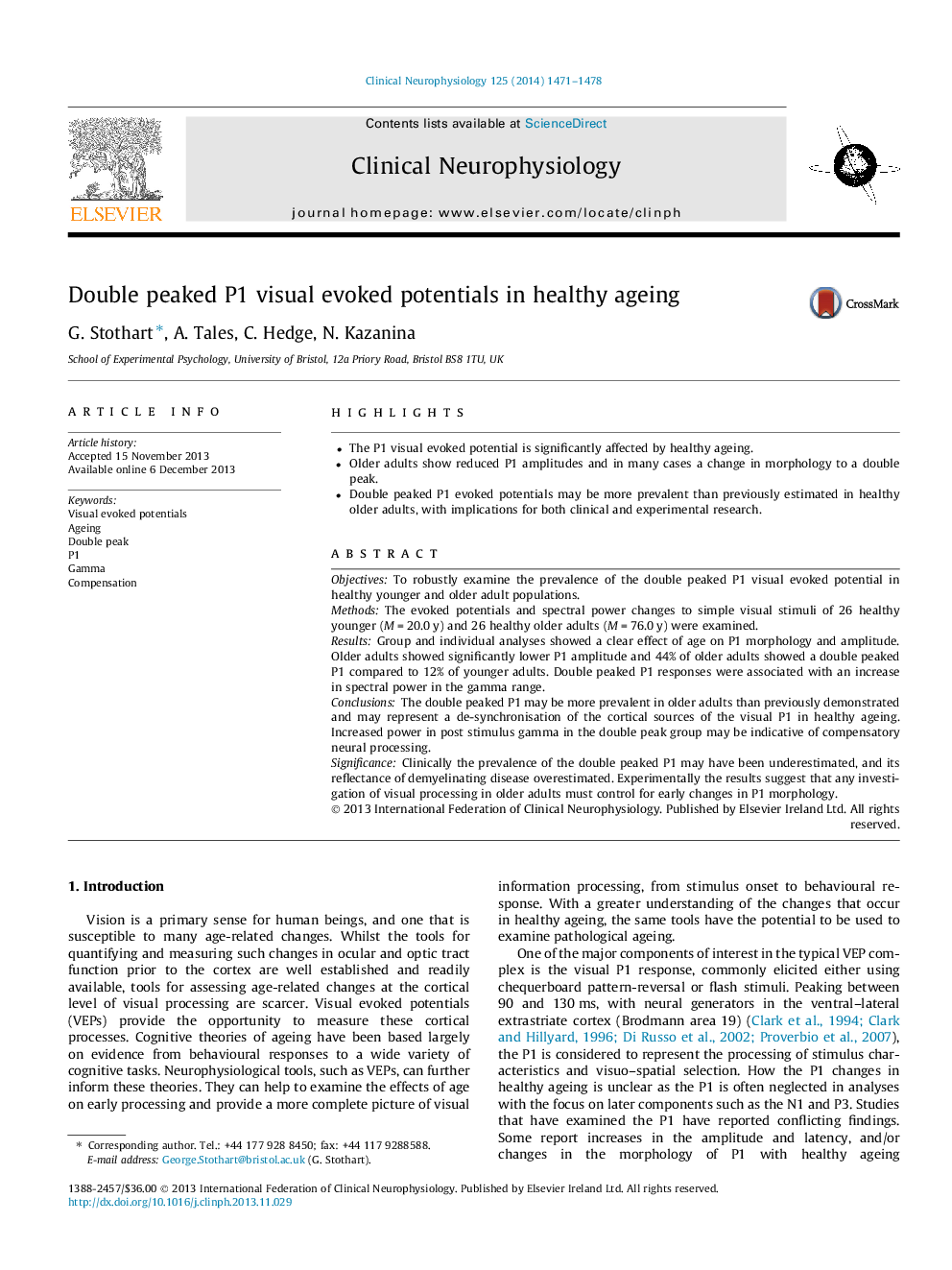| Article ID | Journal | Published Year | Pages | File Type |
|---|---|---|---|---|
| 3043919 | Clinical Neurophysiology | 2014 | 8 Pages |
•The P1 visual evoked potential is significantly affected by healthy ageing.•Older adults show reduced P1 amplitudes and in many cases a change in morphology to a double peak.•Double peaked P1 evoked potentials may be more prevalent than previously estimated in healthy older adults, with implications for both clinical and experimental research.
ObjectivesTo robustly examine the prevalence of the double peaked P1 visual evoked potential in healthy younger and older adult populations.MethodsThe evoked potentials and spectral power changes to simple visual stimuli of 26 healthy younger (M = 20.0 y) and 26 healthy older adults (M = 76.0 y) were examined.ResultsGroup and individual analyses showed a clear effect of age on P1 morphology and amplitude. Older adults showed significantly lower P1 amplitude and 44% of older adults showed a double peaked P1 compared to 12% of younger adults. Double peaked P1 responses were associated with an increase in spectral power in the gamma range.ConclusionsThe double peaked P1 may be more prevalent in older adults than previously demonstrated and may represent a de-synchronisation of the cortical sources of the visual P1 in healthy ageing. Increased power in post stimulus gamma in the double peak group may be indicative of compensatory neural processing.SignificanceClinically the prevalence of the double peaked P1 may have been underestimated, and its reflectance of demyelinating disease overestimated. Experimentally the results suggest that any investigation of visual processing in older adults must control for early changes in P1 morphology.
